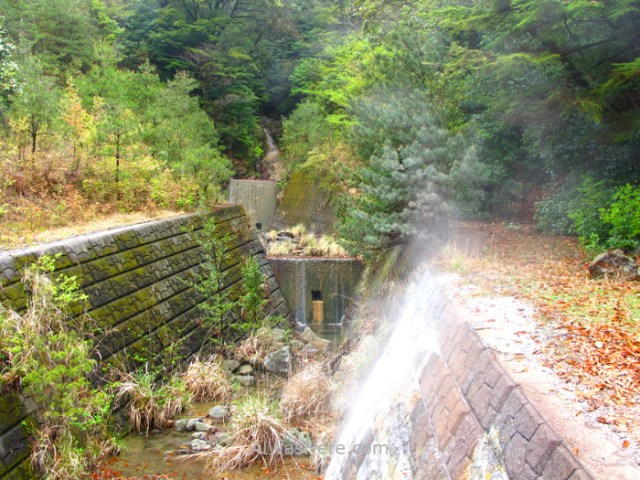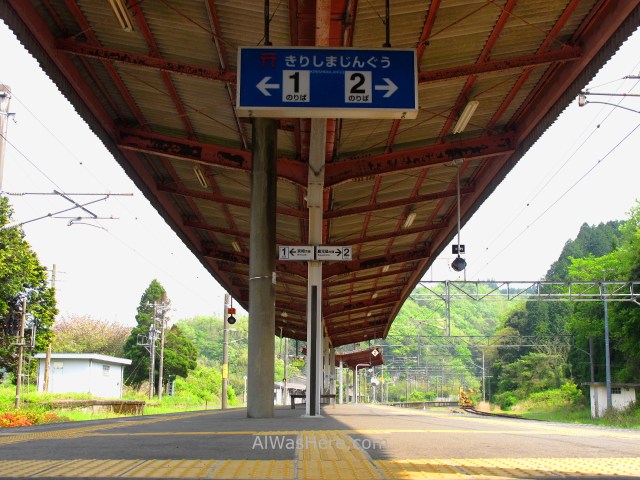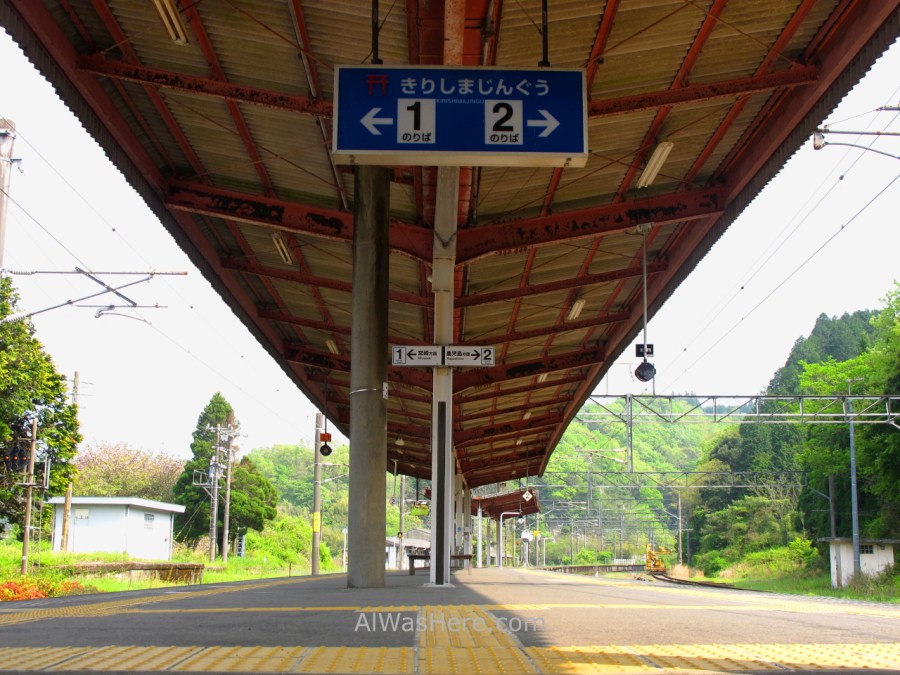WHEN TO GO
Kirishima literally means “foggy island”; It is not an island, but there is so much fog, humidity and plenty of rain:
- Winter months are the least rainy. Temperatures are not excessively low but enough so that there can be precipitations in the form of snow and some trails are inaccessible, so it is not recommended.
- In summer the heat and humidity sensation patent in all Japan can discourage anyone to a walk. June and July are also the rainiest months.
- Therefore, although with almost 40% daily probability of precipitation, spring months are recommended, when we can also enjoy the flowering of azaleas, and autumn. I went in spring and it rained a little the first afternoon, and the next morning it was a bit cloudy.
TRANSPORT
The Park is designed to go in your own vehicle, although you can reach the hot springs with relative ease. It is surrounded by JR train lines, so we can use our Japan Rail Pass: JR Nippo Line, which runs from Kagoshima to Miyazaki, JR Hisatsu Line, which runs from Kagoshima to Kumamoto, and JR Kitto Line, which connects both.

There are two main towns, Kirishima Onsen, where above all there are, as its name suggests, hot springs, almost 100% in spas, there is hardly any free to use next to some rivers, and a little further north Ebino Kogen, which is closer to the hiking trails.

To access these towns and the interior of the Park, if we do not have a rented vehicle, we must use the infrequent buses:
- Going to the onsens is easy: to Kirishima Onsen (the last stop is Iwasaki hotel), buses leave from the following train stations:
- JR Kirishima Jingu (south): 30 minutes, 480 ¥, every 1-2 hours. They pass through the only temple in the area, Kirishima Shrine, with important mystical significance, for being in this area where the gods supposedly descended for the first time to Earth, but in architectural terms it is not a big deal.
- JR Kirishima Onsen (west): 25 minutes, 440 ¥, every 1-3 hours.
- And Kagoshima Airport (southwest): 35 minutes, 650 ¥, every hour.
- But for hiking, the base is Ebino Kogen, whose transport infrastructure is very poor:
- Three buses a day from Maruo Onsen (in Kirishima Onsen village), on their route from Takachiho-gawara Visitor Center.
- From Kobayashi Station (to the northeast) there are infrequent buses on weekends and holidays, although at the moment they are suspended by the volcanic activity.
I attest to what is lacking in transportation:
- I arrived:
- By train from Kagoshima to Kirishima Jingu Station. There are trains every hour approximately, they take an hour and cost between 850 and 1500 ¥ if we do not have the JRP.
- There I took a bus to Kirishima Onsen village, until the last stop, but when I arrived there was no bus to Ebino Kogen, the last one had already departed.
- So I started walking along the edge of the road trusting that a driver would take me on hitchhiking, but none stopped; so I got there walking after 10 km (6 miles) uphill (the altitude difference is 475 meters, not bad) carrying my travel backpack, although when I had walked about 6 km (nearly 4 miles) and I understood that no one was going to take me on hitchhiking, the last kms I walk them on the trail that runs along the west side of Lake Onami.
- To come back:
- I took a bus from Ebino Kogen to Kirishima Onsen, and then another from there back to JR Kirishima Jingu.
- There I took a train to Miyazaki. Each hour approximately, they take between 90 minutes and two and a half hours and cost (without the JRP) between 1500 and 3000 ¥.


WHERE TO EAT AND SLEEP
- Kirishima Onsen. It is one of the leading resort towns in Japan. Some accommodations are ryokan type, and many others would not be a deal if they did not include private onsens, which in turn are of many types: mixed and separate, outdoors or covered, with or without mud baths… Room prices are expensive, as people come here to use the hot springs; Most hotels allow you to use them even if you do not stay there before paying a fee, prices range between 500 and 1000 ¥. The full stay for two people costs between 7500 and 11000 ¥ including meals. There are hardly any restaurants, so people usually eat at their hotels.

- Ebino Kogen. Much more rural, there are just a couple of hotels and a campsite, where I stayed:
- Very well conditioned. In addition to the usual toilets and services, it has a free onsen and an ice skating rink, although the food store is not a big deal. Rent tents, sleeping bags and equipment.
- We can choose between tent or bungalows. Basics are very large, can fit up to 5 people, and are paid per person at 1500 ¥ each (2000 ¥ in summer); I had my tent, but considering how large they were and being alone, I decided on a bungalow. The biggest ones are for up to 24 people.
- It closes from November to the middle of December and from the middle of January to March.


- There are also some hotels on the road that go from Kirishima Jingu Station to Kirishima Shrine.

DANGERS AND ANNOYANCES
- Scarce public transportation is a clear drawback.
- Kirishima is one of the most active volcanic zones in Japan. Currently there are several stretches of the main trails closed to hikers, those that pass less than 1 km from the crater of Ioyama volcano, and those that pass less than 2 km from the crater of Shinmoedake volcano. The eruption of Ioyama is recent, but Shinmoedake became active in 2011 and to this day, as of April 2019, the main trail is still cut and we can only hike two disconnected segments, the northwestern and the eastern. To go from one to another we are forced to go back to the starting point, and move by car or bus to the other. To know the trails that are allowed to travel there are two options:
- Visit Miyazaki Prefecture official website. It is in Japanese, but the automatic Google Translator translates it decently enough. Besides, what interests us is that it indicates in green the open routes and in red the closed routes. The latest update is April 5, 2019 and can be reviewed by clicking on this link.
- Go to one of the 3 visitor centers, that open daily from 9 am to 5 pm: at Ebino Kogen there is the Eco Museum Center, Kirishima City Tourist Information next to Kirishima Jingu Station, or Takachiho-gawara Visitors Center at the base of Mount Takachiho.

- In addition, weather conditions can change in a short space of time, so it is advisable to be well prepared and always wear clothes to be protected against wind and rain.
MORE ON KIRISHIMA NATIONAL PARK:
<BEST HIKING TRAILS
∇ Destinations / ∇ Asia / ∇ Japan / ∇ Kagoshima and Miyazaki Prefectures / ∇ Kirishima National Park

Pingback: KIRISHIMA NATIONAL PARK – Al Was Here
Pingback: PARQUE NACIONAL KIRISHIMA: CUÁNDO IR, TRANSPORTE, DÓNDE COMER, DORMIR E IR A LOS ONSENS, Y PELIGROS – Al Was Here